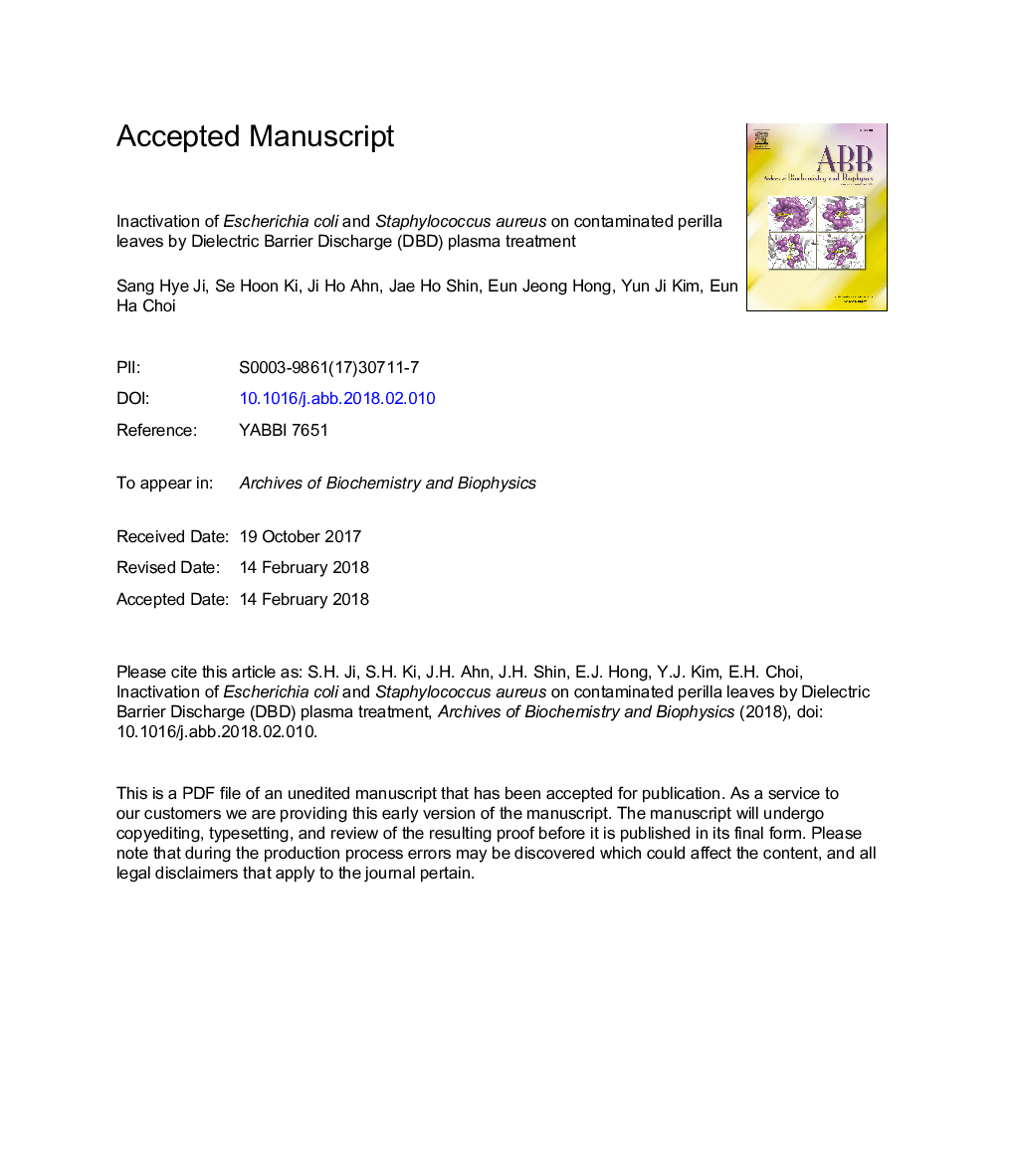| Article ID | Journal | Published Year | Pages | File Type |
|---|---|---|---|---|
| 8288702 | Archives of Biochemistry and Biophysics | 2018 | 37 Pages |
Abstract
This study focused on sterilization methods for the reduction of microorganisms on perilla leaves by cylinder type Dielectric Barrier Discharge (DBD) plasma with underwater bubbler treatment. S. aureus and E. coli in a suspension were reduced to less than 3.4 and 0.5 log CFU/ml after the plasma treatment for 3â¯min, respectively. On the perilla leaves, they were also reduced to 4.8 and 1.6 log CFU/ml after the plasma treatment, respectively. The S. aureus and E. coli bacterial cell wall was damaged by the plasma treatment evident by scanning electron microscopic analysis. The observed infrared bands of the FTIR spectra demonstrated changes in protein, lipid, polysaccharide, polyphosphate group and other carbohydrate functionalities of plasma treated bacteria and untreated bacterial cell membranes. The degradation of the constituent bonds of the bacterial cell membrane by RONS generated from plasma destroys the DNA, RNA, and proteins within the cell, and may eventually cause cell death. In this study, H2O2 (13.68â¯Î¼M) and NO3 (138â¯Î¼M), which are the main factors generated by plasma, proved to have a bactericidal effect by inducing lipid peroxidation of bacterial cell membranes. In conclusion, cylinder type DBD plasma with underwater bubbler can be used as an environmentally friendly food disinfection device in cleaning processes of the food industry.
Keywords
Related Topics
Life Sciences
Biochemistry, Genetics and Molecular Biology
Biochemistry
Authors
Sang Hye Ji, Se Hoon Ki, Ji Ho Ahn, Jae Ho Shin, Eun Jeong Hong, Yun Ji Kim, Eun Ha Choi,
